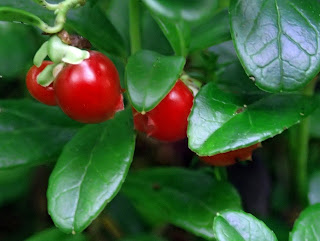Walking in the Buchan countryside, pleasantly cool after the heat of France Grey Granite is reminded of the anachronistic children's hymn which, in a former life, had to be retaught each September in preparation for Harvest Thanksgiving.
Look for signs that summer's done, winter's drawing near
Watch the changing colours come, turning of the year....
See the fields are bare and brown, feel the nights turn cold
Lamps are early lit in town, hunter's moon shines gold
 |
| Mormond Hill from Pitblae |
Field upon field of grain has now been harvested and skeins of geese are regularly heading towards the RSPB reserve at Strathbeg, red berries are appearing on rowans.
 |
| Grey Granite went to the Waters of Philorth, where in a damp patch between the dunes there is a large colony of her favourite wild flower, the Grass of Parnassus. This is an annual autumnal pilgrimage. |


























































